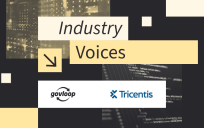An expert in government technology says three steps can help agencies manage their IT and innovate new ways of using it.
Barry Condrey, Chief Information Officer (CIO) for Chesterfield County, Virginia, said his recommendations can assist governments at any level with optimizing their IT.
“We take it to be a blend of people, processes, tools and data,” he said of IT optimization on Wednesday during GovLoop’s IT Evolution Virtual Summit. “It’s really about alignment. You need good practices and processes in place to keep tech debt under control.”
Condrey says that many agencies struggle with tech debt or the cost of operating and maintaining their technology. According to Condrey, a trio of best practices now helps him manage tech debt the county’s CIO.
First, IT optimization requires exploring innovations for agencies’ processes, people and tools so that they contribute more to its mission success. “I need my people to innovate no matter what they do,” Condrey said. “You can’t innovate if you’re not creative. That’s a skill that needs to be exercised.”
Second, diplomacy helps IT optimization succeed because it unites public servants such as agency leaders, IT personnel and budget administrators around common goals. “Innovation requires relationships,” he said. “You can’t innovate if you don’t have a level of trust in your organization.”
Finally, agencies can’t optimize their IT if they’re resistant to changing their tools or how they’re used daily. “It’s also about accepting change,” Condrey said. “If you get those three things right, you’re in a much better position to innovate while serving customers.”
Why does IT optimization matter? According to a second government IT thought leader, IT optimization boosts the customer experience (CX) for the public.
“Juggling the challenge of our existing systems and yet providing new features for the services and missions at our agencies is a continuing challenge,” said Sebastian Dunne, an Account Solution Architect for Red Hat’s North American Public Sector.
Red Hat is an open source software solutions provider. Open source software code aims for public collaboration and can be freely studied, changed and distributed by users.
Dunne estimates that 80% of agencies’ IT budgets are spent on maintenance rather than adding new features for citizens. According to Dunne, it’s a situation that grows increasingly complicated as new security requirements arise for agencies.
“More and more, we’re required to meet security standards that we may have been able to ignore before,” he said.
Condrey and Dunne also agreed that too many agencies wait to start optimizing their IT even though they could quickly achieve positive results.
“Don’t try and boil the ocean,” Dunne said. “Don’t let perfection be the enemy of the good. Start somewhere. You don’t have to completely refactor the older applications that are parts of your system.”
Condrey additionally noted that agencies who wait to modernize and optimize their IT may end up spending more money than they intended.
“You’re going to pay for modernization one way or the other,” he said. “You’re going to pay for it in downtime and not being able to satisfy business needs. You might as well try to do it on your own terms rather than the terms that the system brings you.”
If you want to attend sessions like this one at future virtual summits, pre-register today!
This virtual summit was brought to you by:






Leave a Reply
You must be logged in to post a comment.